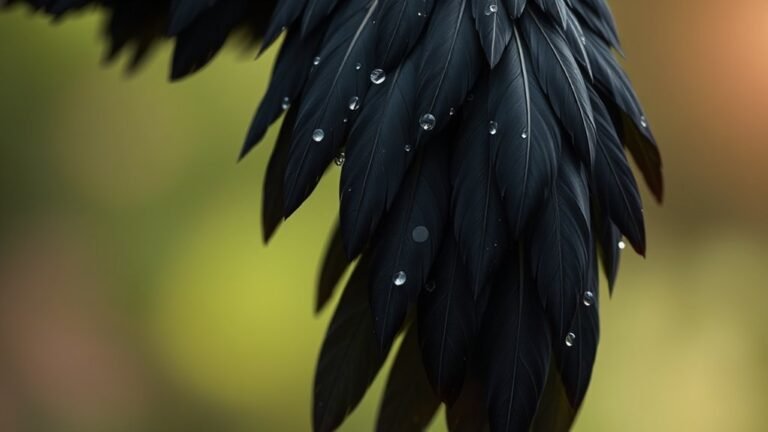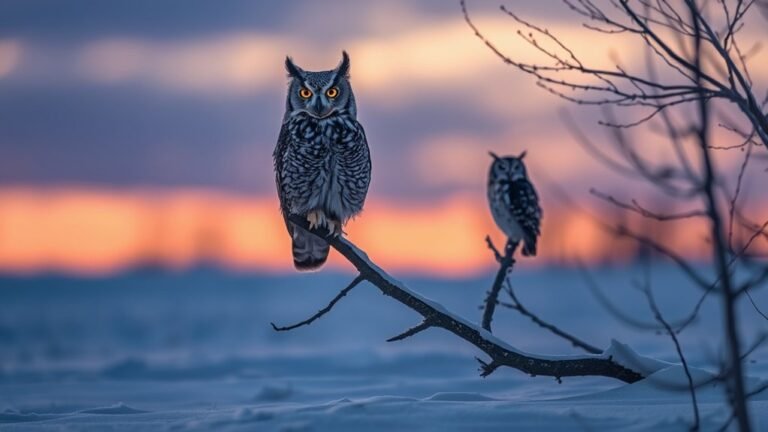Identifying Female Goldfinches: Key Features
When you want to identify female goldfinches, pay attention to their unique features. They have soft colors like olive and light brown, which helps them blend in with their surroundings. Female goldfinches are also smaller than males and have special wing shapes that help them fly easily.
Knowing these traits will help you spot them more easily and make birdwatching more fun. As you watch closely, you might notice even more details that can help you recognize female goldfinches. Enjoy your time observing these lovely birds!
A Quick Overview
Female goldfinches have soft colors that range from olive to light brown. This helps them hide from predators in the wild. Their feathers often have streaks that make it easier for them to blend into their surroundings.
These birds are usually smaller than the males. They are about 4.5 to 5.1 inches long. Female goldfinches have short, round tails and slim bodies. You can spot them by their darker spots on the wings and lighter colors on their bellies. These features help them stay safe in nature.
Overview of Goldfinch Species

When you look at goldfinch species, you'll see some different types. Each type is good at living in different places and eating various foods.
The common goldfinch lives in open woodlands and gardens. It loves to eat seeds from plants like dandelions and thistles. Male goldfinches are bright yellow during the breeding season. This bright color helps them attract mates.
The lesser goldfinch prefers warmer areas, like the scrublands in the southwest. Its back is darker, and it has a bright yellow belly.
Both goldfinch types have fun ways of feeding. They often hang upside down to get to seeds.
Knowing the differences between these goldfinches helps us appreciate how each one fits into its own home and environment.
General Appearance of Female Goldfinches
Male goldfinches are bright yellow, but female goldfinches look different. They've colors that range from olive to light brown. This helps them blend in with their surroundings.
You can see delicate streaks in their feathers. These patterns make it a bit harder to tell them apart from the background. Their wings are pointed, which helps them fly easily. The colors of their wings are usually darker than their bodies, making it easier to spot them.
Knowing these details can help you appreciate female goldfinches more. They're beautiful and well-suited to their homes in nature.
Understanding these birds can make you feel more connected to them.
Coloration and Markings

Female goldfinches have a special look that helps them hide from predators. Their colors aren't as bright as the males.
You'll often see them wearing soft olive-brown feathers mixed with yellow. This color helps them blend into their homes, like trees and bushes.
Their wings have darker spots that make it harder for predators to see them. If you catch a glimpse of these birds in nature, notice their lighter underparts. This light color stands out against their darker backs.
These color patterns make them not only pretty but also very good at staying safe in the wild.
Size and Shape Differences
Female goldfinches look different from male goldfinches in size and shape. Generally, female goldfinches are smaller. They're about 4.5 to 5.1 inches long, while males can grow to about 5.5 inches.
If you look closely, you'll see that the shapes differ too. Female goldfinches have a slimmer body. Their tails are shorter and rounder than those of males. The wings of females also look less thick.
These size and shape differences help you tell female goldfinches apart from the males. Learning these details not only makes birdwatching more enjoyable but also connects you to others who love observing birds.
Behavior and Habits

Female goldfinches show some interesting behaviors that are different from male goldfinches. These actions help us understand how they mate and interact with others in their flocks.
Here are three key behaviors:
- Courtship Display: During mating season, female goldfinches impress mates with displays that show off their flying skills and sounds.
- Flocking Preferences: While males often lead groups of mixed birds, females usually hang out with other females. This teamwork helps them find food.
- Nest Defense: Mother goldfinches are very protective of their nests. They watch over their eggs and chicks closely, which is very important for keeping their young safe.
These behaviors help female goldfinches adapt and build strong connections with other birds. They play a crucial role in the goldfinch community.
Habitats and Feeding Preferences
Female goldfinches like to live in open, weedy areas and gardens where they can find plenty of food. They often build their nests in shrubs and trees near these good spots, which helps keep them safe and close to food.
You can see female goldfinches searching for seeds in plants such as sunflowers, thistles, and dandelions. They're fun to watch as they move around and reach for the seeds with their acrobatic skills.
They usually prefer places filled with native plants that support their eating and nesting needs. Knowing what habitats and food they like can help you enjoy and attract female goldfinches in your area.
Seasonality and Changes in Appearance
As the seasons change, female goldfinches look different. These changes can help you spot them easily. Here's what you need to know:
- Breeding season (late spring to summer): In this time, female goldfinches wear a soft olive-yellow color. They blend in with the plants but are still different from the bright males.
- Post-breeding molt (late summer): When summer ends, their feathers start to change. They lose some brightness and look more muted as they prepare for fall.
- Winter (fall to early spring): In the winter months, females become less colorful. They show a grayish tone that helps them stay hidden in the snowy surroundings.
By knowing these changes, you can find female goldfinches all year long.
Happy birdwatching!
Tips for Spotting Female Goldfinches in the Wild
Spotting female goldfinches in the wild is fun and exciting! To find them, remember a few key points about their appearance and habits.
During the breeding season, you can look for female goldfinches in weedy fields or along roadsides. They like to eat seeds, so these spots are perfect for foraging. Their feathers are a dull yellow-brown color, which helps them blend in with their surroundings.
To spot them more easily, keep an eye out for their favorite flowers, like sunflowers and asters. Listening for their songs can also help. Female goldfinches have soft, cheerful calls that sound different from the males.
The best times to look for these birds are early in the morning or late in the afternoon. They're usually more active during these hours. If you stay patient and watch closely, you may get to see these lovely birds in nature!
Frequently Asked Questions
How Can I Attract Female Goldfinches to My Backyard?
To attract female goldfinches to your backyard, put up seed feeders with Nyjer seeds or sunflower seeds. These birds love these seeds! You can also plant native flowers like asters and coneflowers. These plants provide food and shelter, making your yard a nice place for goldfinches to visit. By offering seeds and flowers, you'll create a welcoming space for them. Enjoy watching these beautiful birds come to your yard!
Do Female Goldfinches Sing Like Males?
Female goldfinches don't sing as much as male goldfinches. When they do sing, their songs are softer and simpler. Male goldfinches are known for their louder and more detailed songs, especially during mating season. This is when they try to attract females. So, if you hear a beautiful song, it's likely a male goldfinch trying to show off!
What Do Female Goldfinches Eat in the Wild?
Female goldfinches eat seeds when they are in the wild. They love seeds from sunflowers and thistles the most. Their food choices can change depending on where they live, helping them stay healthy in different places. Goldfinches enjoy finding good food to keep them strong!
Are Female Goldfinches Solitary or Social?
Female goldfinches like to be around other birds. They often search for food in groups, especially when they are nesting. Being social helps them take care of their young. They can watch for danger better and share food easily. This teamwork makes it more likely that their baby birds will survive.
How Long Do Female Goldfinches Typically Live?
Female goldfinches usually live for about 3 to 6 years. They are known for making strong partnerships during breeding. This helps them have babies successfully and can improve their chances of living longer. Goldfinches are friendly little birds, and their social habits are a big part of their life.

Luna is the passionate founder and author of Birds and You, a website dedicated to sharing her love for birds with fellow enthusiasts. Through her engaging articles and guides, she aims to educate and inspire others to explore the fascinating world of birds. When she’s not writing, you can find Luna observing birds in their natural habitats or sharing beautiful bird photography on Pinterest. Join her on this journey to celebrate and protect our feathered friends!







